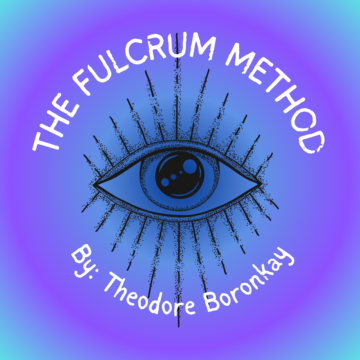by Ali Dening

In the spring of 2022, prolific fantasy author Brandon Sanderson asked his fans to crowdfund one million dollars over a thirty day period. In exchange, Sanderson would self-publish four secret novels that he wrote during the pandemic. In just three days, his Kickstarter had raised $20.3 million, busting records (Whitten). In a month, his fans had collectively pitched in $41.7 million (Sanderson). Kickstarter, a digital crowdfunding platform not too unlike GoFundMe, raked in over $2 million—a gigantic sum, but just 5% of the project’s capital. Brandon Sanderson’s Secret Project Kickstarter proves that publishers must leverage digital tools to achieve maximum success. But how exactly did Sanderson leverage the digital tools available to him? To answer that, we’ll have to look back on the evolution of Sanderson’s career.
Working the graveyard shift at a hotel, Sanderson wrote over a dozen novels before he published a single one. His career truly kicked off when he finished the incredibly popular and acclaimed Wheel of Time series after its author, Robert Jordan, sadly passed away before finishing the fourteen book epic. With his name attached to the finale of one of the most best-selling fantasy series since The Lord of the Rings, Sanderson had the exposure and name recognition most authors can only dream of (Curcic). Over his career, Sanderson has made the most of this opportunity. He has built up a reputation of reliability, consistency, and diligence. Writers in the fantasy genre will often take years, even decades to write a single book. As of 2023, Sanderson has published 71 books, releasing at least one book a year if not more (Talbot). Sanderson’s writing pace sets him apart from even big names like George R.R. Martin and Patrick Rothfuss, whose last novels were released in 2011.
On top of consistently delivering quality content at a speed that puts his peers to shame, Sanderson has a uniquely powerful connection to his fans (Harris). While Sanderson definitely connects with his fans through traditional, in-person marketing methods such as conventions and book tours (he spent 111 days on the road in 2019), he also leverages the digital space to maximum effect (Harris). Sanderson has a YouTube channel with over half a million subscribers to which he consistently posts weekly updates, conversations with other authors and influencers, and deep dives into some of his books. On his channel there is also promotional material for his writing and merch, as well as—most popular—recorded lectures from a class he teaches at Brigham Young University. Any aspiring writer can watch these lectures for free. On the home page of his website, Sanderson infamously displays progress bars showing where he’s at with the novels he currently has in the works (yes, he writes multiple books at once). He also has a blog and a newsletter. Through this deluge of consistent, quality content, he has built a reputation for being transparent and reliable, inspiring a sense of trust within his fanbase (Rusch, Atwell). His digital practices have served to solidify his connection to his existing fans, as well as making him more visible to potential fans.
To manage the many moving parts of his business, Sanderson founded Dragonsteel Books in 2012. Since its inception, the company has grown to employ a team of more than 60 people (Talbot). The team is composed of experts in both the digital and physical realms of book publishing. Dragonsteel is devoted to promoting and selling Sanderson’s writing only, a business model that allows the publishing company to focus all of its attention on a specific audience to bring them the best quality products (Sanderson).
With these support structures well established, Sanderson launched his Secret Project Kickstarter. A 2022 “test run” Kickstarter for a leatherbound edition of “The Way of Kings” (which blew past its goal of $250,000 to raise almost $7 million) allowed Sanderson and Dragonsteel to familiarize themselves with crowdfunded self-publishing (Sanderson). They brought everything they learned from “The Way of Kings” Kickstarter into their Secret Project campaign (Sanderson). Sanderson posted a click-baity video to his YouTube channel titled, “It’s Time To Come Clean.” With typical showmanship, Sanderson revealed that he’d written not one, not two, not three, but four extra novels (Sanderson). His reputation for transparency made the revelation that much more shocking. There had, of course, been no progress bars on his website hinting at any “secret projects” in the works. The title of the announcement as well as its mysterious nature drew clicks from both inside and outside Sanderson’s fanbase. The reveal quickly became the #1 trending video on YouTube (Atwell). Kickstarter’s algorithm recommended the project more and more as backers flocked to it. The Secret Projects destroyed records and began garnering attention from news outlets such as CNBC and The New York Times, which gave the Kickstarter more free marketing, adding impetus to the cycle of algorithmic recommendations (Atwell). Success fueled further success.
The business model for the project was particularly genius. Fans could back as much or as little of the project as they wanted, since it came with different tiers. The higher the tier, the more products a customer would receive. At the bottom tier ($40) a reader could subscribe to receive an ebook every three months over the course of 2023, which Sanderson described as “The Year of Sanderson.” At the highest tier ($500), a customer could receive all four books in ebook, audiobook, and premium hardcover formats every three months, along with swag boxes full of Sanderson merch for the other eight months (Sanderson). By making “The Year of Sanderson” available to Sanderson’s audience at multiple price points and upselling backers (for example, the difference between tiers could be as low as $20, encouraging backers to subscribe to higher tiers for just a little more), Dragonsteel was able to appeal to the widest audience possible.
The Secret Project Kickstarter revealed huge, previously unexplored gaps in the publishing industry. According to Margot Atwell, the former head of publishing at Kickstarter, Sanderson’s Secret Projects prove that fans are “willing to pay more for creative work than publishers are currently receiving” (Atwell). Atwell also argued that the Secret Projects reveal “a huge, often-unsatisfied audience for bookish merch and special editions” (Atwell).
Writers seeking to self-publish are following Sanderson’s lead. According to Kickstarter’s own self-reported statistics, successfully funded projects in the publishing category increased by 21.7% between 2022 and 2024, 2023 being “The Year of Sanderson” (Kickstarter).
KICKSTARTER STATISTICS, 2022
KICKSTARTER STATISTICS, 2024
However, it is important to note that all Kickstarter categories saw an increase during this period, so these statistics could reflect the growing popularity of Kickstarter as a platform in general. Whatever the cause may be, more writers than ever are looking to crowdfunding as a potentially viable source of funding for their publishing projects, and it isn’t a stretch to say that Sanderson’s methods made waves.
Internet personality and “booktuber” Daniel Greene said that every publisher, self or trad, should be looking to Sanderson’s Kickstarter and the digital practices surrounding it as the “gold standard for how big releases should be handled” (Greene). Greene underscored the importance of highly-produced YouTube channels, personal branding, and social media literacy to authors promoting their books. “Undoubtedly,” the YouTuber said in a video reacting to Sanderson’s announcement, “[leveraging the digital space] is the future of publishing. It’s going to be something that every author is somewhat versed in … relying on the tried and true is not going to be sustainable. [Authors] need to keep up with the times” (Greene).
Though critics are quick to point out that Sanderson’s record-breaking Secret Projects are far from “an average case study,”—The New York Times argues that “fundamentally, most authors want to write books, not run a publishing house”—Sanderson’s success cannot be entirely written off as a fluke (Atwell, Harris). In a scathing rebuttal of The New York Times article covering Sanderson’s Kickstarter, Hugo winner Kristine Kathryn Rusch says that Sanderson is not a “unicorn” because he has the requisite “capability and fanbase” (Rusch). Rusch argues that what makes Sanderson special is his willingness to “step out of the traditional publishing bubble” and exert some basic business sense (Rusch). Likewise, Atwell, with a few caveats, is quick to admit that crowdfunding can “be really effective for writers and publishers at all different stages of their career and levels of fame” (Atwell). Sanderson himself wrote on day three of the Secret Project Kickstarter, “I can’t help but think that something huge has just changed. Not just for me, but for publishing as a whole” (Sanderson).
As of yesterday from the time I’m writing this (March 6, 2024), Sanderson has revealed a fifth Secret Project and launched yet another Kickstarter. Yet again, the fantasy side of the internet has exploded with speculation, excitement, and free promotion for the project in the form of shocked reactions. Though it has only been live for two days, this new Kickstarter has already raised over $15 million, blowing past its $2 million goal. With 23 days left for backers to chip in, I have no doubt that the number will only continue to grow… particularly since I mean to contribute myself. As Daniel Greene put it, “Sanderson and his team are running the game” (Greene). Only time can tell whether the publishing industry as a whole will wise up to its new rules.
Works Cited
Atwell, Margot. “What Brandon Sanderson’s $14M+ Kickstarter Project Means.” On the Books by Margot Atwell, 2 March 2022, https://onthebooks.substack.com/p/what-brandon-sandersons-14m-kickstarter. Accessed 27 February 2024.
Atwell, Margot. “How Brandon Sanderson’s Kickstarter Project Broke the Bookish Internet —
Kickstarter.” Kickstarter, 11 March 2022, https://www.kickstarter.com/articles/how-brandon-sanderson-s-kickstarter-project-broke-the-bookish-internet?ref=section-publishing-newsitem-how-brandon-sandersons-kickstarter-project-broke-the-bookish-internet. Accessed 28 February 2024.
Curcic, Dimitrije. “Fantasy Book Sales Statistics – WordsRated.” Word Finder, 2 October 2022, https://wordsrated.com/fantasy-book-sales-statistics/. Accessed 6 March 2024.
“Daniel Greene – Sanderson Changed Publishing Today.” YouTube, uploaded by Daniel Greene, 1 March 2022, https://youtu.be/8EVgZzb5ZKo. Accessed 28 February 2024.
Harris, Elizabeth A. “Fantasy Author Raises $15.4 Million in 24 Hours to Self-Publish (Published 2022).” The New York Times, 3 March 2022, https://www.nytimes.com/2022/03/03/books/brandon-sanderson-kickstarter.html. Accessed 27 February 2024.
Rusch, Kristine Kathryn. “Business Musings: Brandon’s Kickstarter – Kristine Kathryn Rusch.” Kristine Kathryn Rusch, 9 March 2022, https://kriswrites.com/2022/03/09/business-musings-brandons-kickstarter/. Accessed 27 February 2024.
Sanderson, Brandon. “Surprise! Four Secret Novels by Brandon Sanderson by Dragonsteel Entertainment — Kickstarter.” Kickstarter, 1 March 2022, https://www.kickstarter.com/projects/dragonsteel/surprise-four-secret-novels-by-brandon-sanderson. Accessed 27 February 2024.
Sanderson, Brandon. “It’s Time to Come Clean — Brandon Sanderson.” YouTube, 1 March 2022, https://youtu.be/6a-k6eaT-jQ. Accessed 28 February 2024.
Talbot, Dean. “Brandon Sanderson Statistics – WordsRated.” Word Finder, 14 July 2023, https://wordsrated.com/brandon-sanderson-statistics/. Accessed 6 March 2024.
Whitten, Sarah. “Fantasy author’s record-breaking Kickstarter campaign closes at $41.7 million.” CNBC, 31 March 2022, https://www.cnbc.com/2022/03/31/authors-record-breaking-kickstarter-campaign-closes-at-41point7-million.html. Accessed 27 February 2024.

About the Author
“I’m a writer! Surprise!”


